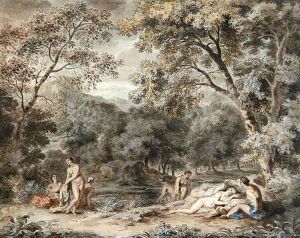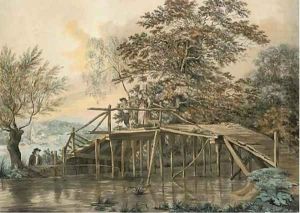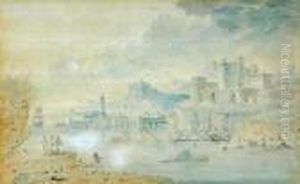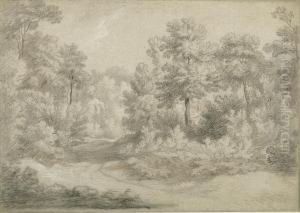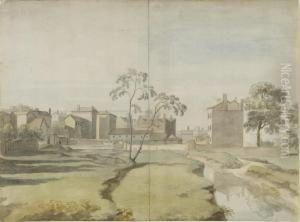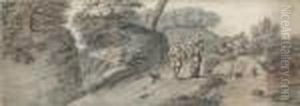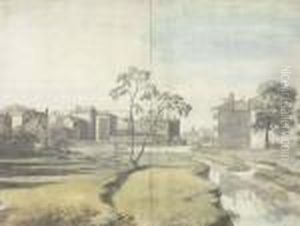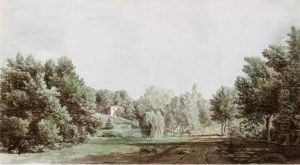William Taverner Paintings
William Taverner was an English artist and topographer, active primarily in the first half of the 18th century. Born in 1703, Taverner's contributions to art and cartography were part of the broader context of the Enlightenment in Europe, a period that emphasized reason, analysis, and individualism in various fields of knowledge, including the arts. Taverner is best known for his detailed drawings and paintings of landscapes, as well as his work in mapping parts of Newfoundland, Canada, which was a significant contribution to the British understanding and administration of its overseas territories during that period. Taverner's work in Newfoundland began in the early 1740s when he was appointed by the British government to survey and map the coast of the island. This work was crucial for improving navigation and for the establishment of more accurate maps for fishermen and the British navy. His maps and charts were among the first detailed documents of Newfoundland's coastline, offering invaluable insights into the geography and natural resources of the area. Taverner's artistic skills were evident in the precision and detail of his maps, which combined practical navigational information with aesthetic considerations. Despite the significance of his work, relatively little is known about Taverner's personal life and training as an artist. It is believed that he was self-taught, which was not uncommon during his time, as formal art education was limited. After his work in Newfoundland, Taverner returned to England, where he continued to work as an artist until his death in 1772. His contributions, particularly in the realm of cartography, remained valuable for generations, and his maps were used extensively well into the 19th century. Taverner's legacy is that of an artist who skillfully bridged the worlds of art and science, contributing significantly to the understanding of the New World territories during a critical period of exploration and colonial expansion.
